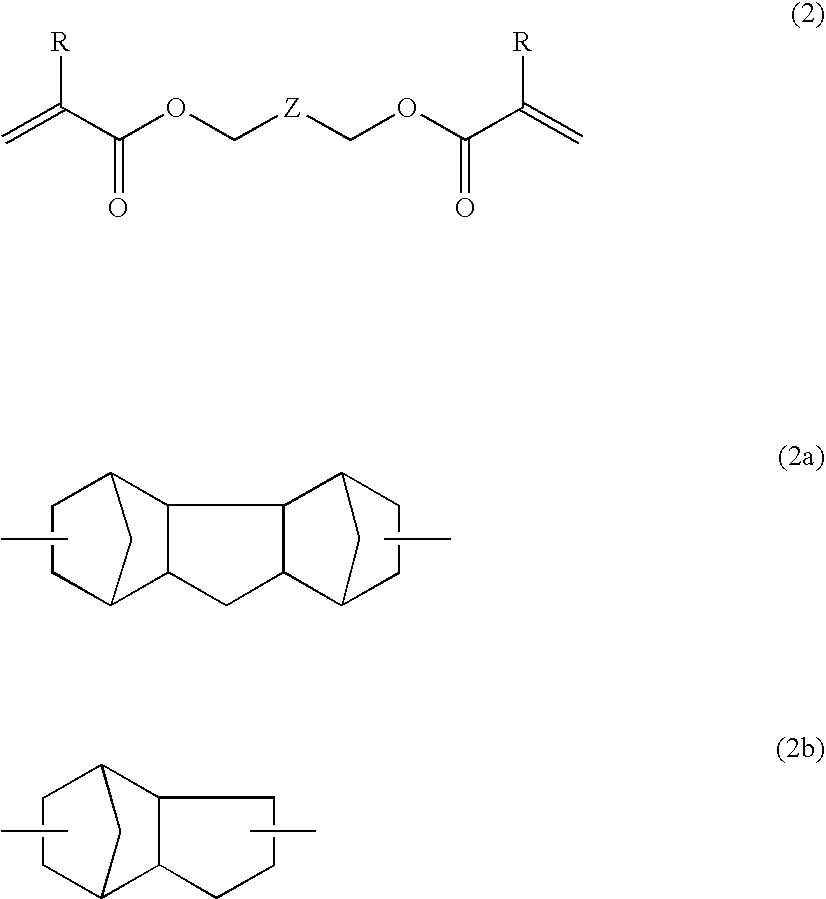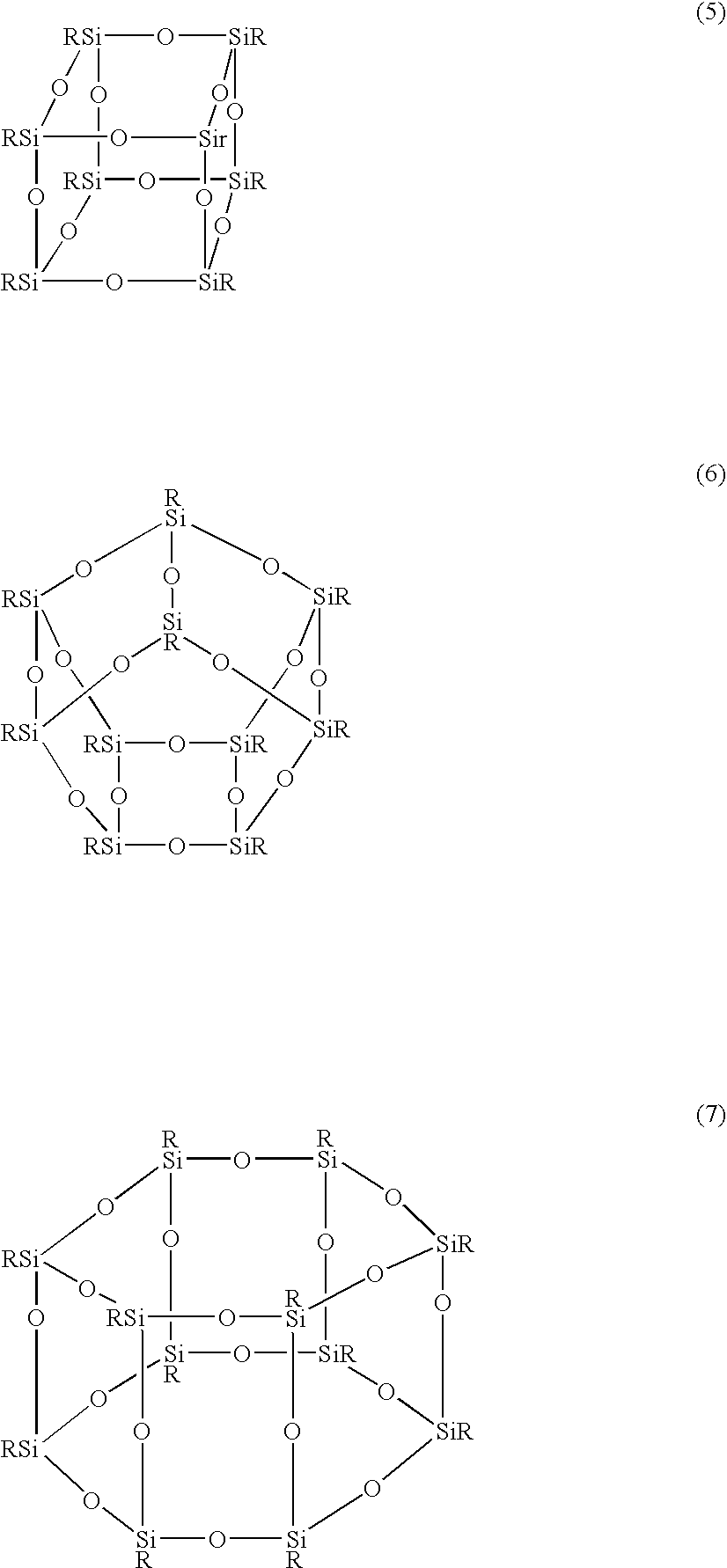Silicone resin compositions and moldings thereof
a technology of silicon resin and composition, applied in the field of silicon resin composition and three-dimensional crosslinked articles, can solve the problems of limited use, poor impact resistance and fracture, and the heat resistance and weatherability characteristic of transparent plastics is markedly inferior to that of inorganic glasses, and achieves the effects of preserving transparency and other optical properties, good dimensional stability, and low linear expansion
- Summary
- Abstract
- Description
- Claims
- Application Information
AI Technical Summary
Benefits of technology
Problems solved by technology
Method used
Image
Examples
synthesis example 1
[0062] In a reaction vessel fitted with a stirrer, a dropping funnel and a thermometer were introduced 40 ml of 2-propanol (IPA) as a solvent and a 5% aqueous solution of tetramethylammonium hydroxide (aqueous solution of TMAH) as a basic catalyst. In the dropping funnel were placed 15 ml of IPA and 12.69 g of 3-methacryloyloxypropyltrimethoxysilane (MTMS: commercially available as SZ-6300 from Dow Corning Toray Silicone Co., Ltd.). The IPA solution of MTMS was added in drops over a period of 30 minutes at room temperature while stirring the reaction vessel. Upon completion of the addition of MTMS, the reaction mixture was stirred for 2 hours without heating. After the 2-hour stirring, the solvent was removed under reduced pressure and the residue was dissolved in 50 ml of toluene. The solution was washed with a saturated aqueous solution of sodium chloride until the solution became neutral and dehydrated over anhydrous magnesium sulfate. The magnesium sulfate was filtered off and t...
example 1
[0065] A transparent silicone resin composition was prepared by mixing 25 parts by weight of the cage type silicone resins obtained in Synthesis Example 1 each of which has methacryloyl groups on all the silicon atoms in the molecule, 75 parts by weight of dicyclopentanyl diacrylate and 2.5 parts by weight of 1-hydroxycyclohexyl phenyl ketone as a photoinitiator.
[0066] The composition was cast to a thickness of 0.4 mm with the use of a roll coater and cured to form a sheet of the prescribed thickness by irradiating with a high-pressure mercury lamp (power output; 30 W / cm) to an integrated exposure of 2000 mJ / cm2.
PUM
| Property | Measurement | Unit |
|---|---|---|
| wt % | aaaaa | aaaaa |
| specific gravity | aaaaa | aaaaa |
| wavelength range | aaaaa | aaaaa |
Abstract
Description
Claims
Application Information
 Login to View More
Login to View More - R&D
- Intellectual Property
- Life Sciences
- Materials
- Tech Scout
- Unparalleled Data Quality
- Higher Quality Content
- 60% Fewer Hallucinations
Browse by: Latest US Patents, China's latest patents, Technical Efficacy Thesaurus, Application Domain, Technology Topic, Popular Technical Reports.
© 2025 PatSnap. All rights reserved.Legal|Privacy policy|Modern Slavery Act Transparency Statement|Sitemap|About US| Contact US: help@patsnap.com



